Kiwi made: McMaster Engineering
Farm Trader tours McMaster Engineering at Winton, in the heart of Southland’s agricultural region, to learn more about the firm that tackles even the most intricate of engineering
Garth McMaster and his team of engineers at McMaster Engineering, specialise in manufacturing truck and trailer-mounted fertiliser spreaders. They also carry out general engineering as part of their everyday business.
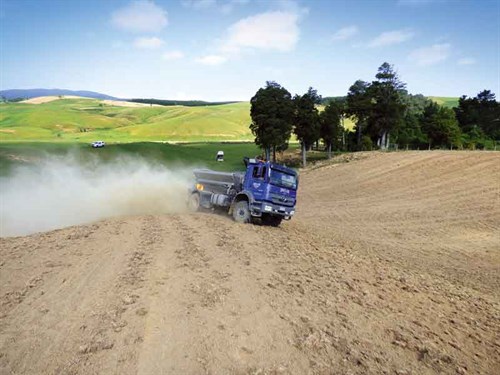
I caught up with Garth for a tour of the McMaster Engineering plant, followed by a trip out to the country to visit Jim Cooper of LJ Contracting, who is the happy owner of a McMaster trailer spreader.
The team
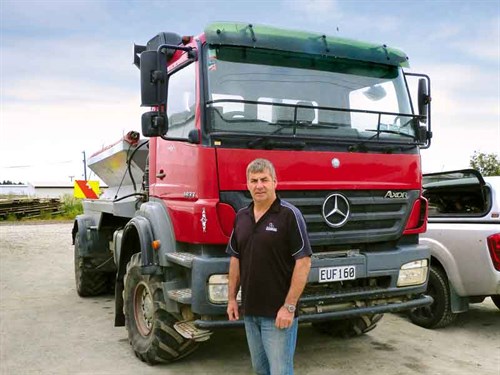
Garth and his wife Leanne have been in business since 1990 when they started out as a small operation, along with Anthony Holland who is still with the company. There are several others boasting long service with McMaster Engineering too.
"Having good staff is what makes the business successful," says Garth. Part of that success is the company’s policy of employing apprentices in their workforce. To that end, Garth has recently taken on a new apprentice, Robert Wilson, who started with the firm fresh out of the Gateway Programme (held in conjunction with Central Southland College in Winton).
The Gateway Programme
Prior to latest member Robert joining the team, Garth has had a constant flow of engineers who have come onboard as a result of the Gateway Programme.
He is full of praise for this, as the one day each week students spend on his workshop floor provides ambitious youngsters with hands-on workplace skills that they take with them as they progress into the workforce after leaving school.
Gateway is administered by the Tertiary Education Commission, with its purpose being to ‘strengthen pathways to employment’.
McMaster Engineering’s participation in the Gateway Programme has already paid dividends, as it has several employees who on the day they started their apprenticeships were able to get to work immediately without the need to learn the basics of the operation from scratch due to having previously worked for McMaster’s as part of the programme.
From Robert and his Gateway-sourced workmates perspective, it’s a pretty good deal too, as they’ve been earning money right from day one on the job. They’re effectively being paid to further their training and education in the process.
There’s no shortage in the variety of skills to learn when you get a job at McMaster Engineering; the company has a diverse portfolio. Mcmaster Engineering manufactures products for the dairy and transport industries, as well as designing and manufacturing digger attachments and building their renowned fertiliser and grit spreaders. They’ll even repair your jet boat if you like.
A tour of McMaster Engineering

Situated on the main street of Winton, McMaster Engineering employs up to 20 personnel and has a client base of over 2500 customers New Zealand-wide.
Garth says that no job is too big or too small and points to a fertiliser spreader sitting on a brand-new Scania P400, which is nearing completion, pointing out that the only part of the machine that wasn’t built in his workshop is the cab and chassis that the spreader is mounted on.
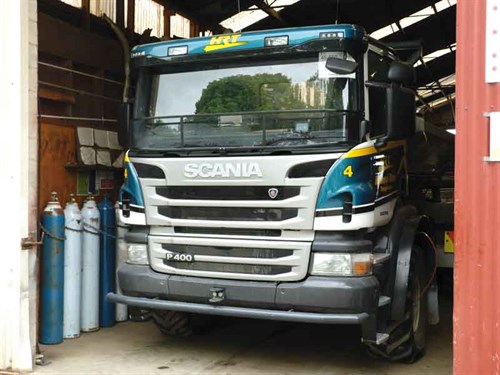
When I asked Garth to walk me through the process of building a truck-mounted spreader, he says that although he is the main designer in the company, he employs a full-time CAD draughtsman, Brian Smith, and that Brian and he in conjunction with the rest of the team, are continually looking at ways to make improvements to every piece of equipment that goes out the door.
The company supplies bulk spreaders of varying sizes, from a three-ton capacity upwards, to suit client’s requirements. All that is required to make a larger spreader is to increase the length of the bin, while the width stays the same throughout the range.
He says there are several brands of truck, such as Scania, Mercedes Benz, MAN and Isuzu, that come in to be fitted-up as bulk spreaders. As each different brand of truck has slightly different characteristics, they’ve overcome this challenge by manufacturing purpose-built mounting brackets to suit each model of truck. This means the hopper width doesn’t have to be changed to suit each truck that comes in to be fitted out as a spreader.
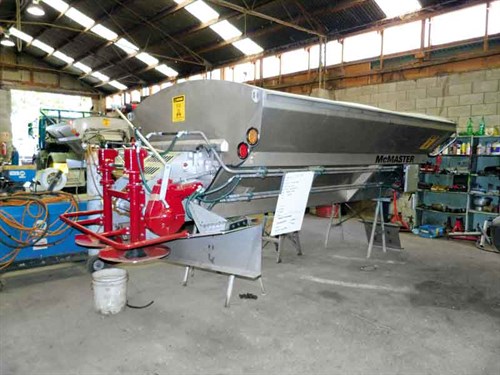
Bins can be supplied as single- or twin-chain designs, with either 535mm or 680mm widths. These are driven by Eaton hydraulic systems with single- or twin-chain systems, all of which are driven from on-truck live-drive or PTO. The twin chain system allows for greater accuracy when spreading boundaries.
Garth says that manufacturing and fitting the spreader is the easy part, as there are myriad of other processes needing to be carried out before a unit is ready to be driven out the door and put to work.

Entire dash units must be removed to add wiring looms that supply power to a plethora of onboard cameras, a Whitehead V3 spreader control system, GPS, radio telephones and automatic greasing units.
While this entire process was originally carried out by McMaster staff, these days, as the number of unit-builds has increased, he uses AJ’s Auto Electrical in Invercargill, who complete the wiring on-site at McMaster Engineering, in order for his staff to oversee quality control.
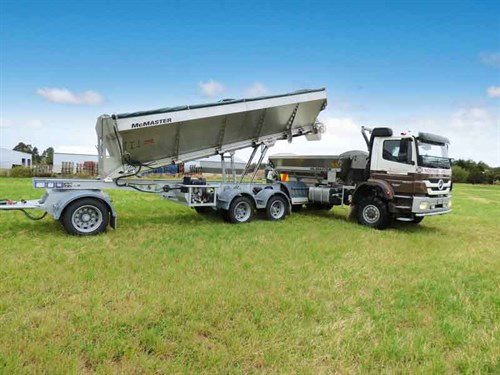
The non-standard sized wheels and tyres fitted to bulk spreaders require yet another process to be performed, as wider mudguards need to be manufactured and then fitted front and rear.
Once again this is done by the McMaster team, as is also the case with chain and tool boxes, the physical side of the automatic greasing equipment, hand wash tanks, extra ladders and other features. Roll bars need to be designed too; yet another part of the equation in the completion of a truck-mounted bulk fertiliser spreader.
The bins used to be built using mild steel plate, but these days Garth prefers to use stainless steel for his bins, because of its durability and longevity.
McMaster Engineering makes a modified version of its fertiliser spreader for spreading grit on roads, with the main difference being the rear mounted delivery system.
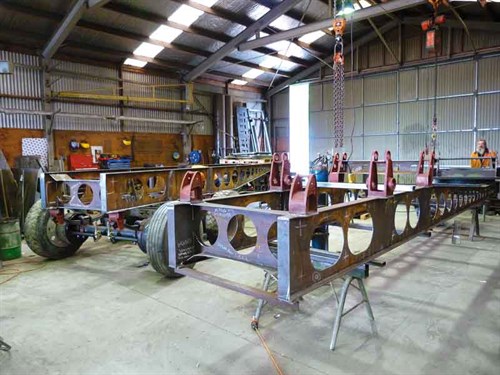
Trailer mounted spreaders require the added step of manufacturing the chassis and axles, as is the case when building McMaster elevators and self-unloading trailers.
Some customers require crop row tyres fitted. These are designed to track precisely behind the tractor, in order to damage as little of the crop as possible.
On the odd occasion that the company isn’t busy building bulk spreaders, there are plenty of other projects that need to be built. The firm also builds items such as digger cabs, root rakes, vee buckets, dairy yard scrapers, effluent pond fencing, dairy mineral dispensers and feed systems and pond stirrers. Garth’s team will also build barns if required.
McMaster Engineering places a high degree of importance on research and development. As if to illustrate the point, the company has recently purchased a second-hand Mercedes Axor, which has been fitted with one of McMaster Engineering’s older model steel-bin spreaders and is now used for extensive R&D field tests.
Jim Cooper’s trailer spreader

Having spent a large portion of the morning on a guided tour of McMaster’s multi-faceted operation, I next went out to see Jim Cooper’s trailer spreader. On the way, we stopped off at a customer’s dairy shed to take measurements for an extension to some pipework. It’s obvious that every available minute of Garth’s day is spent wisely.
Jim Cooper purchased the McMaster spreader initially for use on his own farm, but he also saw that it would fit nicely behind his John Deere 6830 for use in his contracting operation, LJ Contracting.

Jim says he’s extremely happy with the purchase of his single chain-driven, twin spinner spreader, and also with the back-up service he receives from McMaster’s.
The trailer unit is fitted with the same V3 spreader control system as is fitted to the truck-mounted variety and is GPS guided.
Busy for the past 27 years and into the future

With such a diverse range of products in its portfolio and an ongoing R&D programme that’d be the envy of many large corporations, it looks like McMaster Engineering will be kept every bit as busy for the next 27 years as it has been since it began its operating in 1990.
Keep up to date in the industry by signing up to Farm Trader's free newsletter or liking us on Facebook



.jpg)
.jpeg)

.jpg)
.jpeg)
.jpg)
.jpeg)

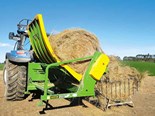
.jpg)



